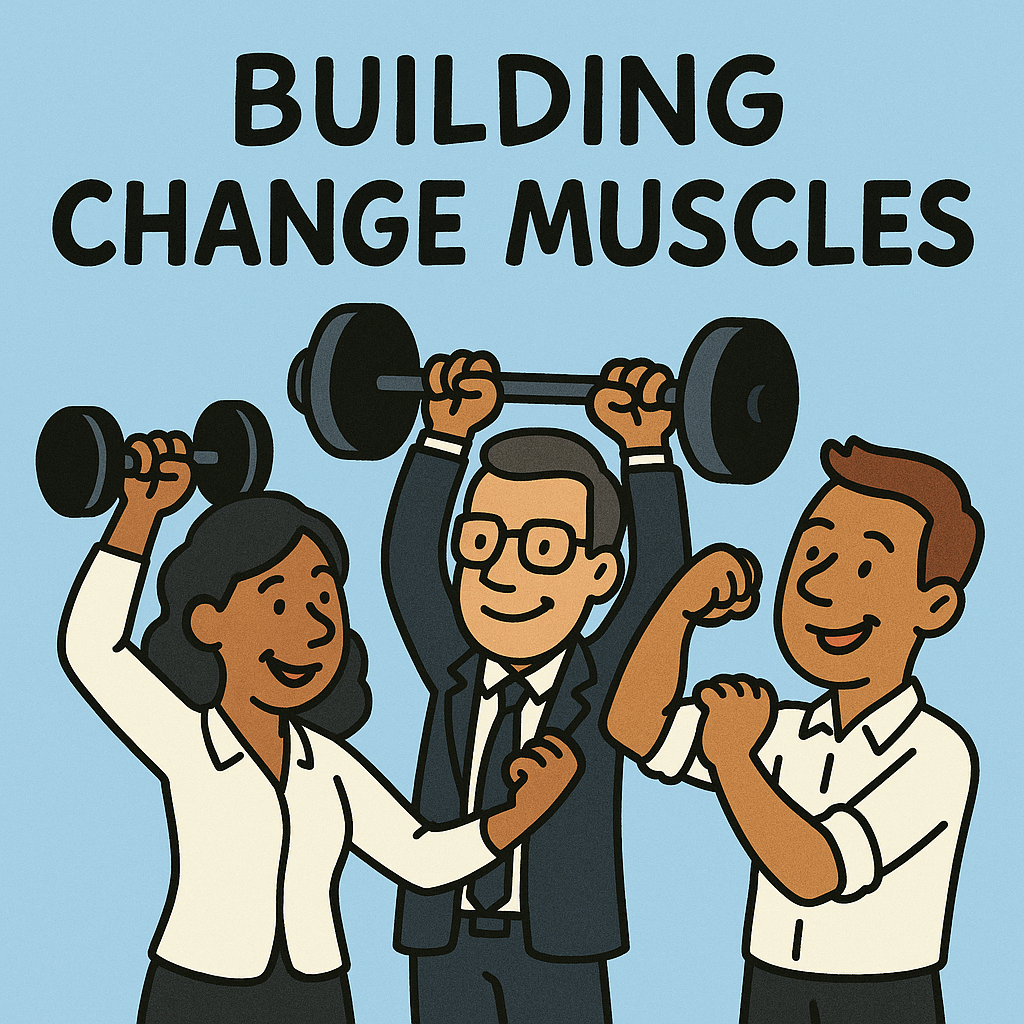Stop Chasing the Finish Line: Thriving in Perpetual Change
Change is everywhere. Not only is it the only constant, but the pace and scale of change are accelerating. And yet, most organizations still cling to an outdated playbook: the big-bang transformation.
If you subscribe to our monthly LinkedIn newsletter Are We There Yet?, you’ll know the title pokes fun at this mindset—leaders asking (understandably), “Are we there yet?”—as if transformation has a final destination.
The problem? Big-bang transformations rarely work. Most large-scale efforts fail outright, and even the ones that succeed struggle to sustain momentum. In my recent Agile Bulletin 2025 article, The Myth of the Finish Line: Leading in an Age of Perpetual Change, I argue for a different approach: stop chasing endpoints and start building an organization that can thrive in constant motion.
Building Change Muscles
Adaptive organizations share some common practices:
Cross-functional teams that sense and respond to change in real time
Dynamic re-teaming to bring the right skills to the right challenges
Internal change champions who model and cultivate adaptability
Decision-making at the edges, where the work (and the signals of change) actually happen
These capabilities not only make organizations more adaptive, they make them faster learners and more responsive to changing markets.
Cross-functional team building their change muscles
Lessons from Behavioral Science
My thoughts were reinforced at a recent mini-course I attended that was offered by the Business Agility Institute called "Change How You Change: Head, Heart, and Habit". In the class, we covered ways to leverage behavioral science and establish a culture of change. Some of the concepts in the class come from the book, Switch, by Dan and Chip Heath, including the elephant-rider-path analogy. (For those interested, I shared my thoughts on "Switch" in our November 2023 newsletter.)
Rider, Elephant, and Path - all critical elements of organizational change
We also learned about how different parts of the human brain react to change to better understand how people process change. When change is offered as a discrete, big-bang transformation effort, the human brain responds with thoughts like "I'm freaking out", "I'm lost", and "I don't know what to do."
The course instructors, Evan Leybourn and Laura Powers made clear that the traditional Change as Three Steps (CATS) of Unfreeze, Change, and Re-freeze is no longer viable or advisable in today's world of perpetual change.
Reinforcement from Org Design Experts
Maybe as a divine sign, I then stumbled upon an Org Design podcast episode from May that featured an interview from the 2024 Organization Design Forum (ODF) conference with Carlos Valdes-Dapena, an organizational design expert and a volunteer for ODF.
While you should consider watching the full interview as Carlos had many interesting and insightful things to say, I want to bring your attention to a 2-minute segment that starts at the 11:26 mark where Carlos shares his thoughts on the right way to deal with organizational change in a world of constant change. One particularly insightful statement Carlos brought up at the beginning of this segment is, "I think we need to dispense with the idea that change is an event."
Change is always happening which means our teams need to be able to adapt quickly as the world around them changes. Hearing leaders across disciplines land on this same conclusion underscores how urgently organizations must rethink their approach.
So What Should Leaders Do?
Teach people to sense change. Encourage teams to refine methods, tools, and practices as they learn more.
Remove the stigma from changing plans. As Dwight Eisenhower put it: “Plans are useless, but planning is indispensable.” Plans should guide, not trap. Lightweight planning that can be adapted as teams learn more should be cultivated and developed.
Invest in continuous learning. The only sustainable advantage is learning faster than your competitors. Practices like Teresa Torres’ Continuous Discovery Habits and Quinton Quartel’s Fluid Scaling Technology (FaST) re-teaming strategies are good starting points.
Reimagine governance. Instruments like OKRs should emphasize outcomes and learning, not locking teams into fixed outputs.
The Bottom Line
Stop treating transformation as a one-time event. The finish line is a myth. Instead, build a culture of adaptability and an organization that senses, learns, and evolves in step with the world around it.
That’s not just survival. That’s how you thrive in perpetual change.
If you’re a leader ready to start building your organization’s change capability, I’d welcome a conversation. You can schedule a time with me here: calendly.com/gary-pa/intro.


